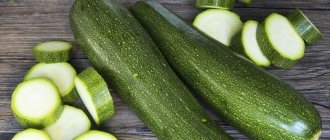What are the benefits of meat?
- Baby meat is the main source of animal protein. Moreover, plant protein is much inferior to animal protein in its quality characteristics.
- This complementary food is rich in microelements - phosphorus, copper, iodine. Iron from meat dishes is absorbed much better than from vegetable dishes.
- When teeth appear, it is important for a baby to develop chewing skills, so meat is the main assistant in this.
- The high content of vitamins B, PP, and E is also important.
After the first six months of life, the child needs additional microelements and protein. Of course, breast milk contains all of the above nutrients, but as the baby's body grows, it requires more than just milk.
The introduction of meat into complementary foods perfectly complements the diet and covers increased energy costs.
Meat complementary foods are divided into three groups:
- meat based;
- on a meat-and-vegetable basis;
- plant-based with the addition of meat.
The last two groups of complementary foods, as their name implies, include vegetables or cereals in addition to the meat itself. Such additives improve the taste of meat puree and contribute to the diversity of the baby’s diet. In addition, vegetables (due to vitamin C and organic acids contained in them) facilitate the absorption of iron contained in meat.
At what age can you give meat to babies?
Meat complementary feeding should begin between 6 and 8 months. This is exactly the age when introducing meat into complementary foods is physiologically justified. Remember that a newborn baby does not need meat.
This is due to the fact that meat for children under one year of age is not the first course, but follows vegetables. As a rule, two months after vegetables, a meat dish is introduced.
Accordingly, at 8 months, meat should be given to children who received their first complementary foods at 6 months. You can start giving meat at six months if the first complementary feeding happened at 4 months.
If the child has low hemoglobin, then this interval can be shortened.
Meat puree for babies under 6 months is contraindicated for several reasons:
- immaturity of the digestive system. Enzymes cannot digest meat protein that is heavy enough. As a result, its digestibility is very low;
- small children's kidneys will not be able to withstand a protein load that is too strong for them;
- danger of allergic reactions.
At what age should meat feeding be introduced?
As for the optimal period for introducing meat complementary foods into a child’s diet, the opinions of experts are divided: some believe that meat can be given starting from 4-6 months; others are convinced that a more favorable period for input is 8-9 months.
According to the Russian national program aimed at optimizing the nutrition of children in the first year of life, meat puree should be introduced from the age of 6-8 months . It is at this age that the baby’s body needs protein and a number of other microelements contained in meat (potassium, iron, magnesium, phosphorus). The timely introduction of meat products into the children's menu contributes not only to enriching the child's body with necessary elements, but also to its harmonious development.
However, the introduction of meat into a child’s diet depends on several other factors:
- individual characteristics of the baby’s development;
- physical development of the baby, indicators of his height and weight;
- type of feeding (breastfeeding or artificial feeding).
Thus, children who are bottle-fed need earlier introduction of complementary foods, be it juices, fruit, vegetable or meat purees. Breastfed babies receive essential macronutrients through breast milk. Therefore, the introduction of complementary foods for them can be postponed for a couple of months.
Rules for introducing meat into a child’s diet
Meat puree for babies is introduced after vegetable / fruit purees, after juices and cereals.
Before offering meat complementary foods to your baby, it is advisable to familiarize yourself with some rules for first complementary feeding:
- Meat (like any other complementary food) should be given only to a healthy child.
- It is advisable to refrain from introducing complementary foods in the following cases: if the child has been vaccinated or is expected to be vaccinated soon;
- during the summer heat;
- if the baby is unwell or capricious.
We read in detail about the rules for introducing the first complementary foods (where to start, at how many months).
How to give pureed meat
Baby meat purees should be given warm before breastfeeding or formula feeding. Complementary foods should be offered from a spoon. The child should be in a sitting position.
Meat complementary foods, just like any other, are offered at lunchtime in order to observe the baby’s reaction to the new product during the remaining half of the day.
Meat puree is given to the child once a day.
Complementary meat products
How to properly introduce meat?
- You should start with half a teaspoon, preferably before lunch, before breastfeeding.
- We increase the amount of meat puree gradually, one teaspoon per day.
- The quality of the meat dish must be excellent: valid expiration date, served warm, preferably cooked on the day of serving.
Until 9 months, while the child still has few teeth, homogeneous meat puree should be given. - You can start getting acquainted with deli meats by adding them to vegetable dishes or diluting them with breast milk.
What meat to start complementary feeding with?
- Beef. Rich in protein and iron.
A fairly lean variety of meat. According to price criteria, it is affordable for many families. Of course, it is better to start complementary feeding with it. If a child is allergic, it is better not to start with beef; here rabbit or turkey come to the rescue. - Rabbit, turkey. They are low in calories, low in fat, and practically do not cause allergies. But they have a fairly high cost, up to 400 - 500 rubles per kilogram. But rabbit meat is quite difficult to buy in its natural form.
- Chicken.
If a child is allergic to chicken egg white, then we never start complementary feeding with chicken. It has a fairly low calorie content (in particular, breast), but is no less allergenic. - Pork, as you know, has sufficient fat content and is suitable for babies after one year.
In recent years, allergists have been advising children with allergies to start complementary feeding with pork. - Horsemeat. Rich in protein, but very difficult to find in the market. Suitable for hypoallergenic menus.
- Mutton. Very fatty meat, recommended after 10 months.
- Goose and duck. These meat dishes contain refractory fats that are difficult for a child’s body to digest. For this reason, we exclude goose and duck until they are three years old.
Where to start with meat feeding
- The meat must be a homogeneous mass; for this, it is well boiled and thoroughly chopped using a blender.
- A child's first introduction to meat begins with 1/2 teaspoon.
- For the first time, meat, like any other new product, is given to the child in the first half of the day so that there is an opportunity to observe the child’s reaction.
- Every day the portion increases. If the child was given half a teaspoon of meat the first time, the next day you can double the portion.
- Meat puree for first feeding, prepared at home, should not be stored in the refrigerator. The child should receive only freshly prepared foods, and if you do store them, then no more than a day.
- Meat is given to children for lunch.
- When the baby gets used to the new taste, you can add meat to soup, vegetables and porridge.
- Over the age of 8 months, meat should be present in the child’s menu 5 days a week. When you don't give your baby meat, you can offer fish instead.
- After a year, you can cook meatballs so that your child develops chewing skills. But since at this age there are not yet enough teeth to chew fully, knead them with a fork.
- If your child refuses meat, mix it with a product that he enjoys eating. If this doesn't help, don't insist, wait a week and offer the meat again.
- There is no need to mix several types of meat. First, the baby must get used to each one separately.
Failure to follow the rules for introducing meat into complementary foods for infants can cause allergies or other health problems.
Daily intake of meat for children under one year old
The amount of meat he should receive per day depends on the child’s age.
| age(months) | norm(gr) |
| 7 | 5-30 |
| 8 | 50 |
| 9-12 | 60-70 |
What types of meat should I give my child?
For the first acquaintance, turkey and rabbit are better suited. They do not cause allergies, are rich in proteins and minerals, and are also considered the easiest to digest.
Other types of meat are introduced a little later, using caution.
Chicken meat is a dietary product, rich in protein, but very allergenic. It is not recommended to start complementary feeding with chicken for children with allergies, especially if an allergy to chicken egg white is detected.
Beef and veal are considered the most difficult to digest, as they are very rich in animal protein, the digestion of which requires a large amount of time and enzymes. Children suffering from milk protein intolerance should not be given.
Horse meat is ideal for feeding children, it is rich in protein, contains a large number of useful elements, and does not cause allergies. The disadvantage is the high price and scarcity.
Duck and goose meat is not recommended for children under 3 years of age, as it contains refractory fats that the child’s stomach is not able to digest.
By-products are included in the child’s diet after ten months, when the baby is already accustomed to meat dishes. They are rich in iron, manganese and copper. It is allowed to give tongue, liver, hearts. Recommended for children with anemia.
Liver is rich in iron and vitamin A, very useful for baby food, but the babies themselves don’t think so, they often don’t like the taste of liver.
To prepare liver puree for a child, boil it in second water, chop it, you can add any vegetables, boiled carrots are best.
Some experts have come to the conclusion that the child, while in the womb, has already become familiar with the meat dishes that she ate, and it is better if he eats the meat that is a priority in his family, unless, of course, the baby is allergic to it.
It’s best if you gradually introduce your child to all types of sources of animal protein, but there’s no need to rush into it. To begin with, the baby must get used to one type of meat, only then introduce him to another.
How to cook meat yourself?
Cooking meat for babies is a difficult, but quite doable task:
- First, choose the type of meat. It is better to buy meat in trusted markets, stores, or purchase homemade meat from trusted suppliers. It should not be weathered or have foreign odors;
- the meat should be washed under running water, films, cartilage, and excess fat should be removed;
- place in an enamel bowl and boil until tender. On average, beef and pork are cooked for 2 hours, goose, duck - up to 4 hours;
- Pass the boiled meat through a meat grinder.
How to prepare meat puree for babies?
Boiled meat must be passed through a blender and then through a sieve. Essentially, the algorithm is the same as when preparing minced meat, only the puree should be more uniform in mass.
Up to 10 months, the meat puree should be homogeneous.
You need to add ½ - 1 teaspoon of vegetable oil to the finished homemade meat puree.
For babies over 10 months old, you can cook meatballs or steamed cutlets - after a year. Ready minced meat can be frozen in the freezer.
It is not recommended to store boiled meat for baby food in the refrigerator for more than a day.
It is not recommended to add pepper, spices, or salt to meat puree. This may distort the taste of the meat dish, and the child may refuse to eat it.
How to prepare meat puree for first feeding
Meat puree recipe for complementary feeding
Making meat puree at home is not so difficult; to do this, you need to take 20-30 grams of lean meat, without fat and films, wash it, chop it finely or grind it in a meat grinder.
Cook for 30-40 minutes, then separate from the broth, add a little breast milk or formula, beat with a blender, or grind several times in a meat grinder and rub through a sieve.
Meat puree for baby's nutrition is ready; no need to salt it. Milk can be replaced with vegetable broth.
In this form, children receive their first meat food, in the form of puree, to which they are already accustomed when they became acquainted with vegetables and fruits.
At a later age, it will be possible to add salt to meat dishes, add herbs, bay leaves, a little butter or cream at the end of cooking, and also prepare meatballs, soufflés and steamed cutlets when the baby can chew on his own.
After a year, the baby can switch from homogenized puree to medium-ground dishes. The soups are prepared in vegetable broth, the meat is cooked separately and chopped, then combined with the broth, and the vegetables can be mashed with a fork.











